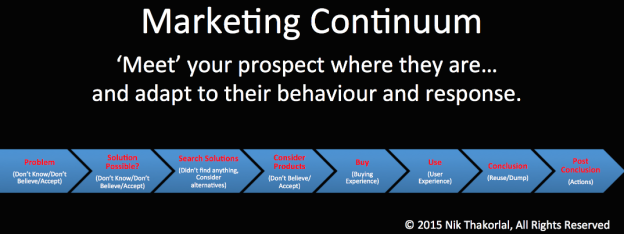If you’re creating something new like software (but can be anything else), then this is an important message.
Dare I say, it might save you thousands, if not hundreds of thousands of dollars.
First some ground rules… the main thing, is to keep the main thing, the main thing (I heard it from Zig Ziglar).
Ideas generally are worthless. But if you’re going to spend time and your hard-earned money to pursue something then you should consider if protection is right for you.
So please don’t become a scaredy-cat and think everything you’re getting done should be protected. A simple logo or some ad copy or a web design for beta site costing you a few dollars does not qualify. It’s just not worth it.
But if you’re spending some serious money on a new idea to develop software that has potential then you definitely should consider protecting yourself. More importantly if you have spent quite a bit of time thinking about this one thing, spoken to potential users/customers then you’ll want to protect your efforts.
The usual approach these days is just to post a project on Odesk.com, Elance.com, Freelancer.com, Upwork.com and numerous other sites. This does give you speed of implementation (good thing) but you’re getting exposed to theft.
IMPORTANT!
If and when your IP is stolen, the outsourcing sites are useless in providing any protection or relief. Firstly you exposed yourself the minute you explained what your project was about. But the bigger risk is when your IP is stolen AFTER you have successfully completed the project! The ‘outsourcer’ was good and delivered on time and under budget.
Then he/she sells or gives IP to someone else to launch the same product they have just created for you. Yup, this happens! Integrity is a precious commodity.
Here are the steps you can take:
1) If that important, then do NOT use an outsourcer. Get an employee.
2) Deal with local providers (in your city, country).
3) If you are going to use an outsourced provider then only deal with providers in countries with strong IP protection.
Now let’s assume your budget is tight and you can’t do 1-3 from above. You have to use someone from a country where IP laws practically do not exist (they do but laws are not enforced). Sidenote: quite a few providers will be from these countries where IP protection is not strictly enforced.
Step 1: When you post the project, make it very clear that you want people who respect IP. The project needs to be detailed enough in terms of technology stack to use, any technical issues, expectations, reporting etc. But there is no need to be specific about your idea. This is usually enough to start with.
Step 2: Mention that they must sign sign an IP agreement given by you (up and above any implied by the outsourcing website). This is where you want a well drafted agreement that caters for a few scenarios. Unfortunately most agreements do not cater for cross-border differences. You want an agreement that covers everything. E.g. In some jurisdictions, some IP rights always remain with creator and can not be assigned, and some everything can be assigned.
Step 3: They must provide their passport and driver’s license details. Why is this important? Who are you going to go after if someone steals your stuff if you don’t know who they are. Trying to sue a username on an outsourcer website does not work! But more importantly it sends a message upfront that you’re serious. This scares most developers but true professionals won’t have an issue. If someone does resist then it’s your call to make if you’re willing to take the risk. Remember protection upfront vs millions in lost IP afterwards. It’s your project so you make the call. Remember, your project needs to be big enough for an outsourcer to bother as well. Don’t do this on a $500 job!
Step 4: Get their phone number and mobile number upfront. Why? 2 reasons: It’s another data point to locate person(s) and there will be times when your developer(s) needs to drop everything to fix something – despite best practices this does happen from time to time.
Step 5: Do not give any info until steps 1-4 are completed.
IMPORTANT! Almost everyone you will work with will be honest. But you just need one bad one…
Good luck…
